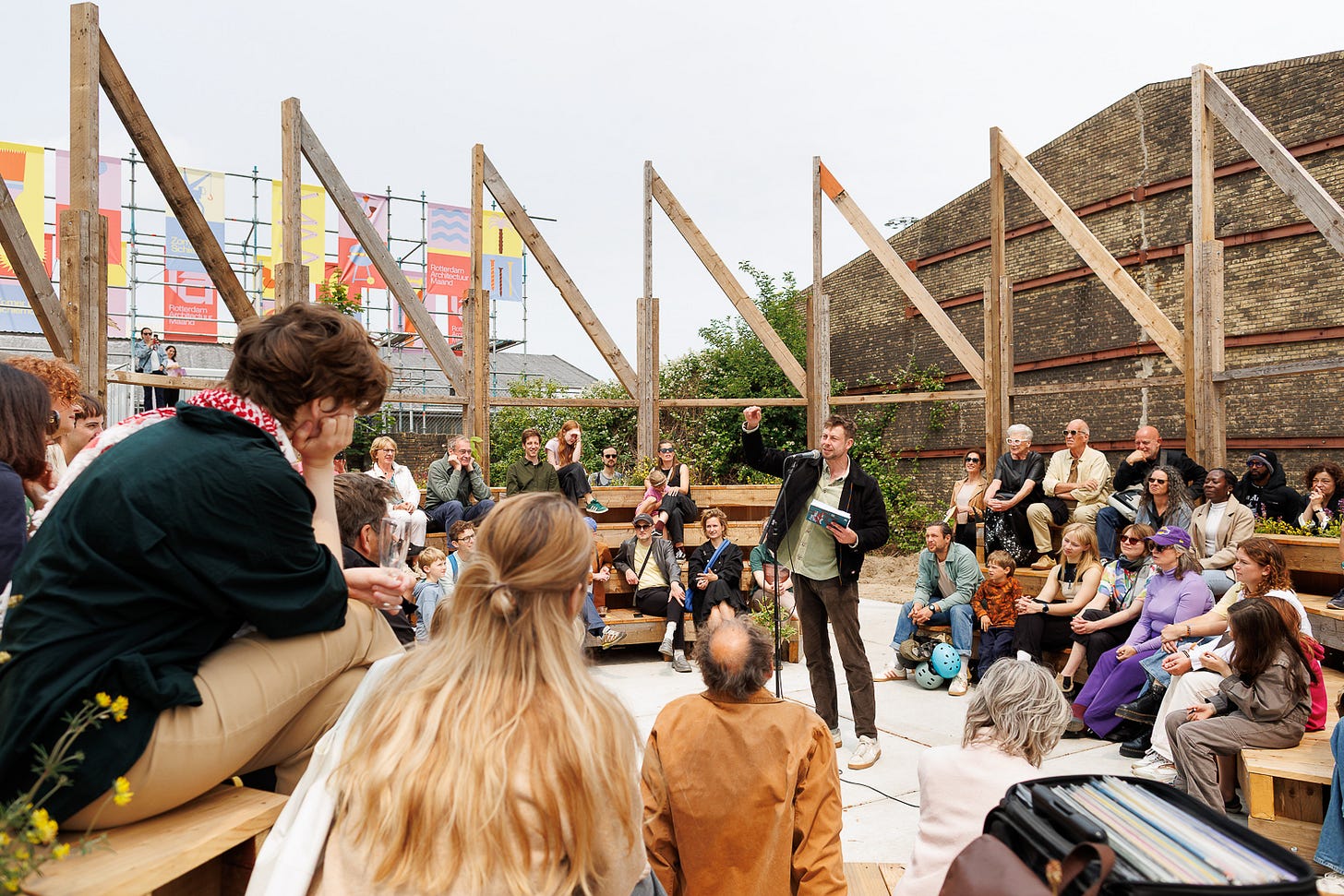Hello readers,
Our quotes are always quite literal regarding our focus, but today’s quote feels like a punch: “waste should be on public display”. While I am a big Brian Eno fan, that is not why we chose this sentence. We picked it because it forces us to think of something: if waste should be on public display, it means it’s currently removed from it.
Waste, and thinking about waste, is not simply a conversation about recycling, reuse or circularity (while it is also about that) – it is about looking at what we choose not to see. At what we disappear. At what is uncomfortable. This is what transcends from the work of Dutch philosopher Lisa Doeland, who wrote her doctoral thesis on waste as something that, in fact, comes back to haunt us. And what does that mean? What does it mean to think of waste not only as refuse, but also as a lens?
Looking at waste forces us to look at, for instance, the painful reality of those living in such extreme poverty, that disposed things become their main livelihood – from Buenos Aires’ cartoneros to waste pickers in Delhi. How different is it to think of waste-picking not as an act of altruism (that retired neighbour cleaning the street armed with a plastic bag and the good old grabber tool) from waste-picking as an act of survival, in so many of our cities worldwide? For those who have nothing, that which is disposed by those who can have it all, becomes crucial.
Would we be thinking differently about our cities’ governance and conditioning if we were thinking of that? Jonathan Castillo, an Argentinian cartonero (waste-picker), could not be clearer: “we lack so much empathy to understand why people rummage through the trash”.
Waste becoming a source is the most literal way of reframing – which is what, we believe, the urbanism world needs more of at the moment. It is hopeful to see that some players in the industry, globally, are trying to put reuse at the centre – from Carlo Ratti’s call for a circular Venice Biennale, to innovative ways of material reuse for projects as small as tactical interventions, and as big as buildings. Creating with what is already there is also an interesting trend in the field and one that, again, forces us to look differently at what we have around us – and also at what is no longer there.
Have a great weekend,
Nuria Ribas Costa
Communications Manager & Researcher
“A city’s waste should be on public display.” — Brian Eno
🌎 From the world. In this section we usually highlight one project from the world that relates to the topic, but today we’re doing it differently. Beyond the fact that the urbanism field needs to continue to put recycling and reuse at the centre, on this occasion we want to highlight that waste, globally, is a systemic and intersectional issue.
There are plenty of stories about the interrelations between waste and poverty, and many, too, about how proximity to waste also normalises its presence, hence also the damage it causes and the dangers it brings. What are the living conditions of populations that inhabit areas in the proximity of dumps or contaminated places? How can city-making be acknowledging of this, and respond to it? For a quick reality check on what this can look like, take a look at this photo series by The Guardian of Agbogbloshie (Ghana), the world’s largest e-dump – they are horrifying.
And if you are looking for compelling narratives and clear explanations of how and why plastics end up where (mostly in the Global South), take a look at the Waste Newsroom of investigative journalism outlet Lighthouse Reports.

🚲 From the Netherlands. During the whole month of June, in Rotterdam, the Architecture Month takes place. The heart of the festival, on the quayside behind the Schiehavenhallen in Schiemond, is built entirely with reused materials. Studio Architectuur MAKEN, one of the minds behind the idea, wrote a manifesto with a crystal clear key principle “everything is already there. If we care about the Earth, we stop taking and start giving back.” The Architecture Month runs until June 30th, and the festival heart is open Wednesday to Sunday.

📚 Dive Deeper. In 2023, award-winning journalist Oliver Franklin-Wallis published Wasteland: The Dirty Truth About What we Throw Away, Where it Goes, and Why it Matters. Shortlisted for the Wainwright prize for conservation writing and featured in New Yorker’s list of Best Books of 2023, it is a journey into the world of rubbish, unpacking the story of the global waste industry. From the mountainous landfills of New Delhi to Britain’s overflowing sewers, from hollowed-out mining towns in the USA to Ghana’s flooded second-hand markets, Franklin-Wallis gives voice to the people on the frontline of the waste crisis.


